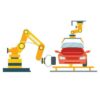All Wheel Drive Market Summary:
The all-wheel drive (AWD) market has witnessed significant growth in recent years, and it continues to gain traction among car enthusiasts and everyday drivers alike. AWD technology offers enhanced traction, stability, and control, making it a popular choice for various terrains and weather conditions. One of the key factors driving the growth of the AWD market is the increasing demand for vehicles that can handle diverse road conditions. Whether it’s navigating through snowy roads, tackling off-road adventures, or simply ensuring a smooth and safe ride on wet surfaces, AWD provides the necessary grip and stability to keep drivers in control. Moreover, the advancements in AWD technology have made it more efficient and accessible. Manufacturers are constantly innovating to improve the performance and fuel efficiency of AWD systems, making them more appealing to consumers. Additionally, the integration of AWD in electric and hybrid vehicles has further expanded the market, as it offers better traction and handling without compromising on eco-friendliness. In terms of vehicle types, the AWD market caters to a wide range of segments, including sedans, SUVs, crossovers, and even sports cars. This versatility allows consumers to choose the AWD option that best suits their needs and preferences.
Furthermore, the AWD market is witnessing a surge in demand from regions with harsh weather conditions, such as North America, Europe, and parts of Asia. The need for reliable and capable vehicles in these regions has fueled the adoption of AWD technology. The all-wheel drive market is experiencing steady growth due to its ability to provide enhanced traction, stability, and control. With advancements in technology and increasing demand from various regions, the AWD market is expected to continue its upward trajectory in the coming years. Whether it’s for off-road adventures or everyday commuting, AWD offers drivers the confidence and peace of mind they need on the road.
All Wheel Drive Market Overview:
The All Wheel Drive Market overview provides a comprehensive understanding of the analyzed market. It includes an introduction to the market, its size, growth rate, and key trends. This aims to give clients a broad understanding of the market landscape. The market analysis of the All Wheel Drive Market delves deeper into the market dynamics, focusing on factors such as market drivers, challenges, and opportunities. It explores the macroeconomic and microeconomic factors affecting the market, industry regulations, and emerging market trends. The analysis provides valuable insights into the current and future market conditions.
The assessment of the All Wheel Drive Market is performed by taking various factors into consideration, like, for instance, the business expansion policies of key players, competitive analysis of the progress of new entrants and emerging players, and the revenue, financial, and opportunity analysis of market players. The also analyzed based on regional segmentation, type or technique, end-user spectrum, etc. This research implements the latest methodologies to help clients understand the overall market scenario and strategize accordingly. The All Wheel Drive Market report provides an overview of the different types of analysis conducted during the market research process, including but not limited to SWOT analysis, Porter's Five Forces analysis, PESTLE analysis, and market forecasting. These analyses provide a deeper understanding of the market dynamics and assist in making informed business decisions.
Major players included in the All Wheel Drive Market:
- ZF Friedrichshafen AG
- Continental AG
- Magna International Inc.
- Borgwarner Inc.
- Jtekt Corporation
- American Axle & Manufacturing Inc.
- Eaton Corporation Plc.
- GKN Plc.
- Dana Holding Corporation
- Robert Bosch GmbH
- Haldex
- Honda Motor Co., Ltd.
- Meritor, Inc.
- Mitsubishi Motors Corporation
- Subaru Corporation
All Wheel Drive Market Segmentation:
By System Type
- Automatic AWD
- Manual AWD
By Vehicle Type
- Passenger Car
- Commercial Vehicle
By EV Type
- Battery Electric Vehicles (BEV)
- Plug-in Hybrid Electric Vehicle (PHEV)
By Component
- Differential
- Transfer Case
- Propeller Shaft
- Power Transfer Unit
- Final Drive Unit
Future Market Analytics Focus Points:
- SWOT Analysis
- Key Market Trends
- Key Data -Points Affecting Market Growth
- Revenue and Forecast Analysis
- Growth Opportunities For New Entrants and Emerging Players
- Key Player and Market Growth Matrix
All Wheel Drive Market Competitive Analysis:
The competitive analysis of the All Wheel Drive Market assesses the competitive landscape of the market. It includes evaluating key players in the industry, their market share, business strategies, and competitive advantages. The competitive analysis also highlights the strengths and weaknesses of major competitors, allowing clients to understand the competitive positioning of companies operating in the market.
Objectives of the Study:
- To provide a comprehensive analysis on the All Wheel Drive Market by segmentation and by region
- To cater extensive insights on factors influencing the market growth (drivers, restraints, industry-specific restraints, business expansion opportunities)
- To anticipate and analyse the market size expansion in key regions- North America, Europe, Asia Pacific, Latin America and Middle East and Africa
- To record and evaluate competitive landscape mapping- strategic alliances and mergers, technological advancements and product launches, revenue and financial analysis of key market players
How our market research reports help clients:
Our market research reports provide valuable insights to clients in their decision-making process and support their growth and market capture efforts. They offer:
- Comprehensive understanding of market trends, dynamics, and growth potential.
- Identification of niche markets and emerging opportunities.
- Assessment of competitive landscape and strategic benchmarking.
- Insights into consumer preferences, buying behavior, and market demand.
- Risk assessment and mitigation strategies.
- Market forecasting and trend analysis for informed business planning.
- Understanding product development, pricing, and other strategies.
In case of any specific requirements or changes to the current table of content based on your scope, please contact us at: enquiry@futuremarketanalytics.com






















